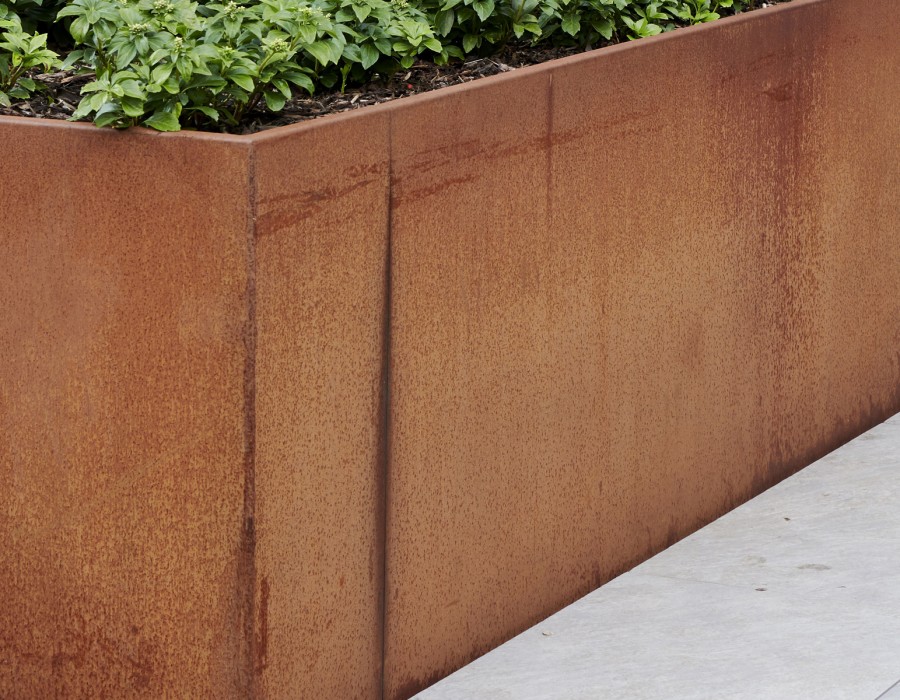When finding the right metal sheet for your project, there are several factors to keep in mind. If this is the first time you have considered using a Corten Steel Gr B Sheet with this particular finish, then read on to learn how to choose one that will perform well in your application.
ASTM A606 Type 4
ASTM A606 Type 4 Corten Steel Sheet is a high-strength, low-alloy steel used for various construction projects. It has a minimum corrosion-resistance index of 6.0. Known as weathering steel, it offers significant weight savings and corrosion resistance.
Weathering steel is often referred to as COR-TEN, HSLA, and A-606. It was developed to provide the benefits of both high strength and low alloy while eliminating the need for paint. However, its longevity depends on the climate and the speed at which a protective rust layer forms.
Weathering steel can be welded using TIG, MIG, and conventional SMAW electrodes. To ensure that welding is successful, a gas lens is required to protect the weld from the air. Also, preheating the metal is important before welding. This prevents the metal from cracking during the welding process.
The alloy mix's chemical composition determines the degree of atmospheric corrosion resistance. ASTM Guide G101 is used to calculate the corrosion-resistance index. For more information, visit the ASTM website.
Corten steel sheets are available in a variety of widths and thicknesses. They are commonly used for construction applications that require weathering and corrosion resistance.
ASTM A588
Corten Steel, also called Weathering steel, is known to withstand extreme weather conditions. Its resistance to atmospheric corrosion makes it perfect for use in various applications.
The corrosion-resistant property of the steel is derived from the alloying elements that are added to the material during production. Alloying elements can include nickel, copper, and chromium.
A588 is a low-alloy steel that is suitable for several different applications. It has an improved corrosion resistance over standard carbon steels. In addition, it is lighter than other types of common steel.
Corten steel is widely used in buildings, bridges, and vehicles. It is used in exhaust systems, containers, and steel frame structures.
It is also used in construction and industrial boilers. As well as providing excellent corrosion resistance, this metal has a high tensile strength. Moreover, it is non-corrosive and can be easily welded. Besides, it can be cold rolled, tempered with ultrasonics, and normalized.
Corten A Steel Plate is ideal for architectural applications. Moreover, it can be welded with manual and spot welding techniques. Compared to A572-50, it is much better in terms of atmospheric corrosion resistance.
Corten A Steel Plate is available in several thicknesses. Depending on the application, the thickness can range from four to eight inches.
Typical applications
Corten steel is a material that is used in a wide variety of applications. It is particularly popular for its durability and aesthetics. These characteristics make it suitable for outdoor projects.
Weathering steel, also known as COR-TEN, is an alloy that helps to protect metals from corrosion. This alloy consists of chromium, nickel, and copper. The chromium gives it added corrosion resistance. Many Corten Steel Gr B Plate Stockist have a large stock to fulfill clients need.
Corten steel's benefits include a durable, natural finish and no need for maintenance. However, it only lasts for a short time as ordinary structural steel. Therefore, it's important to choose a high-temperature underlayment.
It is common for a building to develop a layer of rust over time. When this happens, the new metal blends with the rest of the surface. Typically, a protective oxide film will not form on certain areas.
A rusty orange color is one of the first things you will notice about corten steel. It is also not as rust-proof as conventional steel. To combat this, it's recommended to use a catch system. In addition, using a gutter can help you manage the flash of rust.
Corten steel's lifespan is dependent on several factors. Among the most important are climate, temperature, and atmospheric conditions.
For example, you may not see a protective patina on Corten steel structures in areas with high pollution levels. Similarly, you may not see any in areas that experience heavy rain. Also, lean tools and insufficient lubrication can reduce the quality of a plate's finish.





Comments